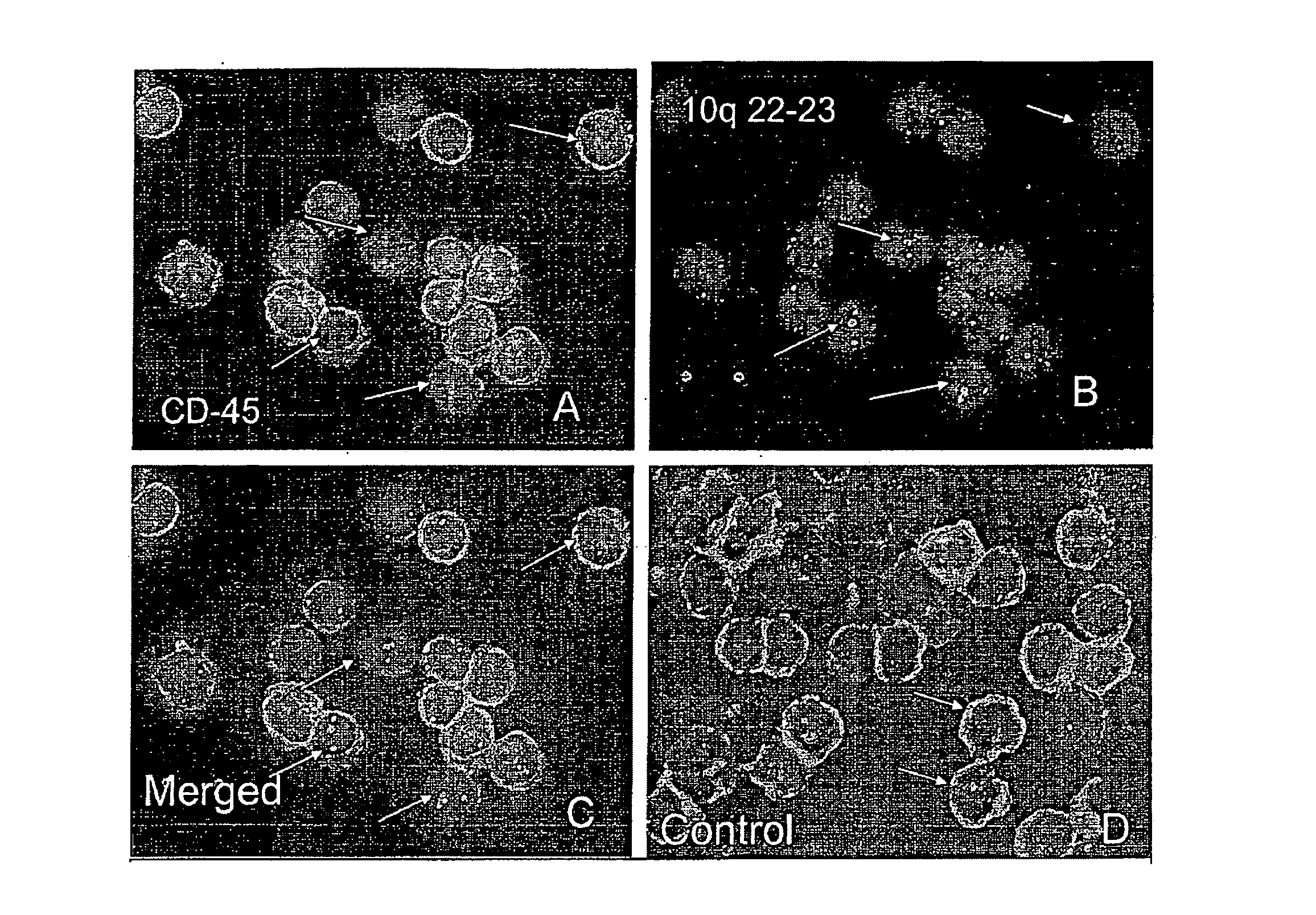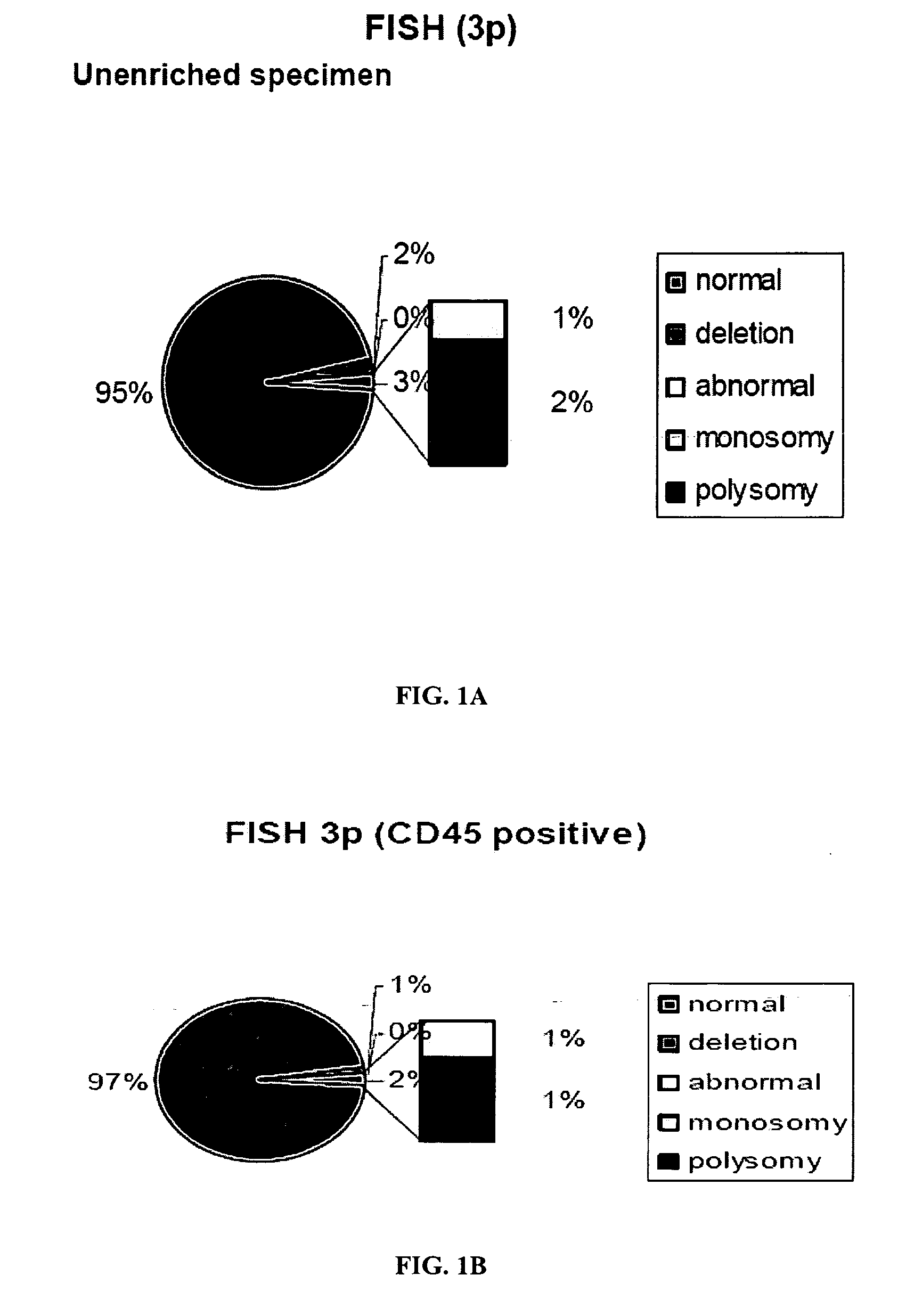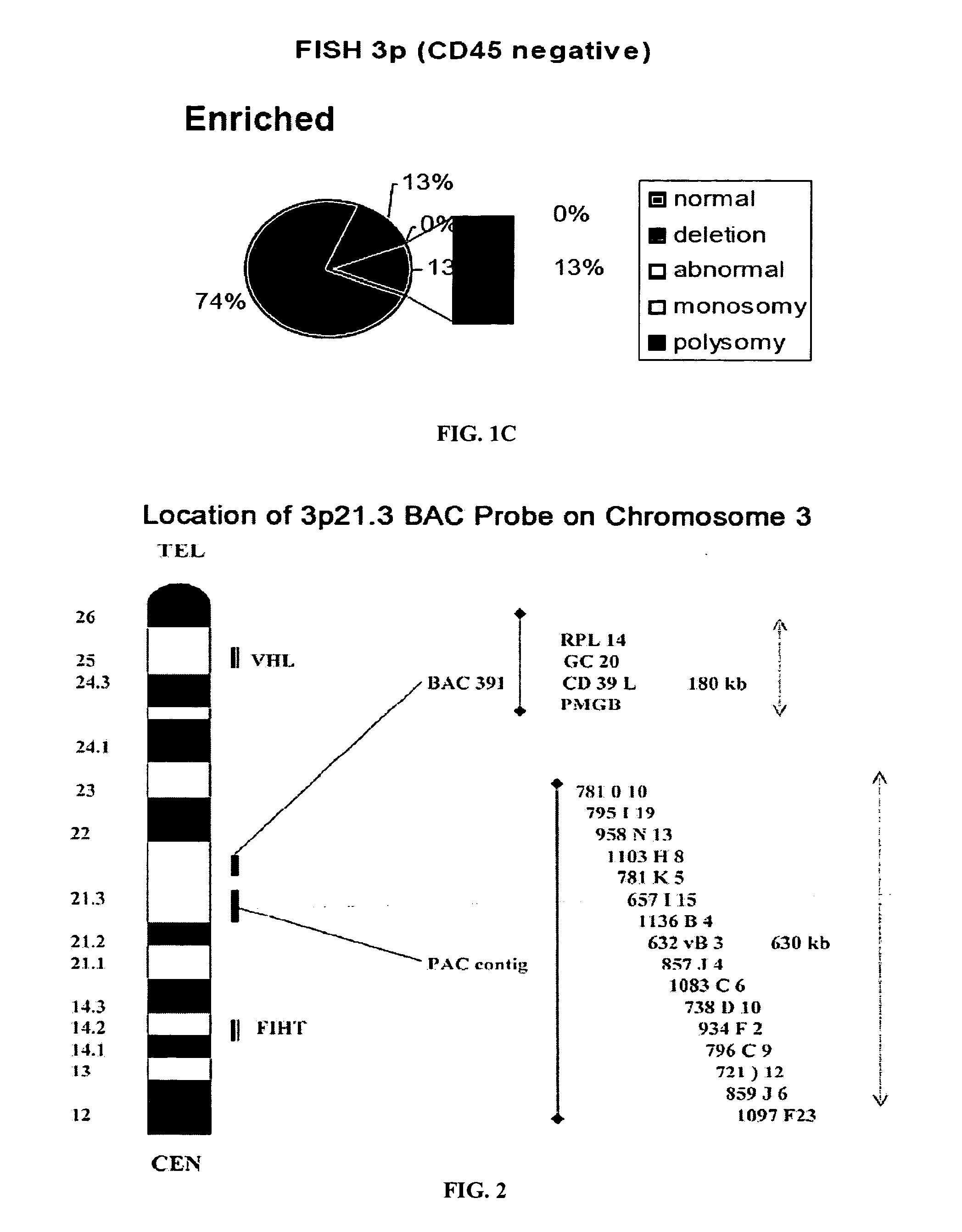Circulating Tumor and Tumor Stem Cell Detection Using Genomic Specific Probes
a technology of genomic specific probes and tumor stem cells, applied in the field of oncology, genetics and molecular biology, can solve the problems of poor therapeutic response associated with the detection of ctc, the overall survival rate of less than 15%, and the inability to quantify the number of tumor cells or look at morphology
- Summary
- Abstract
- Description
- Claims
- Application Information
AI Technical Summary
Benefits of technology
Problems solved by technology
Method used
Image
Examples
example 1
Chromosomal Abnormalities
[0246]Lung cancer specimens and sputa evaluated with genome specific probes for lung cancer demonstrated that the unique DNA probes, 3p22.1 and 10q22-23 are both early markers of neoplasia and are associated with poor prognosis. Abnormalities of these biomarkers are present in cancer cells, and morphologically benign epithelial cells in the cancer field, as well as neutrophils and macrophages from sputum. Genetic abnormalities involving 3p22.1 and 10q22-23 also occur in CD45-negative peripheral blood mononuclear cells or circulating tumor cells (CTCs) in patients with lung cancer, who have significantly higher genetic abnormalities in these cells, compared to control bloods from high risk patients.
Methods
Methods of Testing Specimens for Chromosomal Abnormalities
[0247]The specimens were tested as follows (see FIG. 5). First, the circulating epithelial cells from 30 ml peripheral blood of 50 patients with established lung carcinoma were isolated from buffy lay...
example 2
Staging by Circulating Tumor Cells
[0275]Biomarker Abnormalities Associated with Tumor Stage
[0276]To investigate if any of the markers can be used to differentiate between the different pathological stages of disease compared to controls, a univariate multinomial logistic regression (with controls as the reference group) was fit for each marker, separately. Table 7 displays those stages that are significantly associated (P<0.05) with each marker (denoted by X).
[0277]Some of the CACs were significantly associated with early-stage (IA) and / or late-stage (IIIA, IIIB, or IV) NSCLC (P<0.05). Table 7. Most notable were CACs containing abnormalities of 3p22.1 / CEP3 and 10q22.3 / CEP10, and gain or loss of biomarkers in the URO set (FIG. 23). CTCs with at least two abnormalities of URO or LAV, or abnormalities of 3p22.1 / CEP3 or gains of 10q22.3 / CEP10 correlated with late disease stage.
TABLE 7Markers Associated (P Compared to ControlsMarkersIAIBIIIIIIV3p22.1DeletionsX—XXXAbnormalities / CEP3X—XXXM...
example 3
Correlation Between Blood and Corresponding Lung Cancer Tissue
[0288]It was also shown that there was a high correlation between biomarkers on CTCs compared to biomarkers from the primary lung tumors from the same subjects. See Table 17. This finding is important clinically as for example, tumors over- or under-expressing EGFR will have similar EGFR genetic abnormalities in the CTCs and can be used as a marker for anti-EGFR therapy.
TABLE 17Correlations of circulating tumor cells in blood (CTC) and tumor washes(TW)Correlationsp-valueLavysion (EGFR, 5p15.2, C-myc, 6p11-q11)0.0002CTC correlated with TW EGFR Lav GainLavysion CTC (EGFR, 5p15.2, C-myc, 6p11-q11)0.001correlated with TW Cep7 Urov GainLavysion (EGFR, 5p15.2, C-myc, 6p11-q11)0.005CTC correlated with TW Single Gain LavUroVysion (Cep3, Cep7 Cep17, 9p21.2)0.028CTC correlated with TW poly cep3 / 3pLavysion (EGFR, 5p15.2, C-myc, 6p11-q11)0.029CTC correlated with TW mono cep3 / 3pLavysion (EGFR, 5p15.2, C-myc, 6p11-q11)0.032CTC correlat...
PUM
| Property | Measurement | Unit |
|---|---|---|
| Volume | aaaaa | aaaaa |
| Volume | aaaaa | aaaaa |
| Volume | aaaaa | aaaaa |
Abstract
Description
Claims
Application Information
 Login to View More
Login to View More - R&D
- Intellectual Property
- Life Sciences
- Materials
- Tech Scout
- Unparalleled Data Quality
- Higher Quality Content
- 60% Fewer Hallucinations
Browse by: Latest US Patents, China's latest patents, Technical Efficacy Thesaurus, Application Domain, Technology Topic, Popular Technical Reports.
© 2025 PatSnap. All rights reserved.Legal|Privacy policy|Modern Slavery Act Transparency Statement|Sitemap|About US| Contact US: help@patsnap.com



